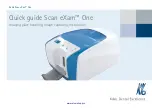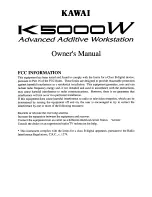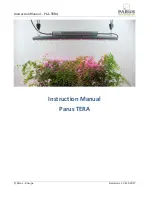
• Dysuria (pain or difficulty with urination)
• Vaginal pain
• Fever
• Serous, bloody or purulent discharges.
• Hemorrhages or other difficulties.
• Urinary obstruction.
• Bowel problems.
SURGICAL PROCEDURE
There are different possible approaches, via the anterior or posterior vaginal
wall. In the following we shall explain the posterior approach.
The description of the technique is summarized in the following steps:
a) Patient to be in dorsal lithotomy position with legs raised and bent, under
local or general anesthetic.
b) The administration of prophylactic therapy with antibiotics should be
considered, according to the procedure approved by the hospital.
c) Insert a 12 or 14 Foley catheter in the urethra.
d) Make a lengthways incision along the posterior vaginal wall stopping 2
cm before the vaginal apex.
e) Make a blunt dissection toward the ischial spine, then identify the
coccygeal muscle and sacrospinous ligament on the right side. The same
procedure is performed on the left side
f) Touch the right ischial spine as a point of reference and determine the size
and thickness of the sacrospinous ligament.
g) To ensure correct connection of the TAS with the RIG, follow carefully the
stages described below
h) Insert the TAS in the anterior wall of the sacrospinous ligament 2.5 cm
medial to the ischial spine (Figure 1 shows the correct direction to apply
pressure when inserting the TAS). The surgeon should use his index finger
to touch and indentify the ligament and to guide the retractable insertion
guide to its correct implant location. The TAS should be bilaterally placed,
one in each sacrospinous ligament.
i) Once the TAS have been correctly placed, two anchor points are made
upon the vaginal apex or bilaterally in the uterosacral ligaments with TAS
sutures and eye suture needle, making sure the suture penetrates deeply so
as to avoid tearing.
Note: Use of the reinforcement implant: Instead of putting the 2 TAS sutures
through the uterosacral ligaments, the central part of the reinforcement
implant can be sutured to the uterosacral ligaments and afterwards pass
the TAS sutures through the ends of the reinforcement implants, moving it
towards the sacral spinal ligament using sliding knots.
j) The incision made in the posterior vaginal wall is closed halfway using
absorbable suture. At this point, the uterus or vaginal apex, are guided
bilaterally with the help of the index finger and a slipknot towards the
sacrospinous ligaments, avoiding excessive tension.
k) Closure of the vaginal wall is completed in the standard way.
l) Final antisepsis. Digital rectal examination and placement of a vaginal
tampon.
Postoperative care and therapy are at the surgeon’s discretion.
In case a removal of implant is required, please note:
Polypropylene mesh integrate with patient’s tissue, so complete removal may
be difficult.
In case a mesh removal is necessary due to pain, we recommend trying to
cut all the tension areas identified by the surgeon.
In most cases, the risk of organ injury caused by mesh removal may be
higher than the benefits resulting from this removal, so each case should be
assessed and decided at the surgeon’s discretion.
126º
Summary of Contents for Splentis
Page 2: ......
Page 32: ...TAS TAS Splentis TAS Splentis...
Page 33: ...Splentis Splentis Splentis Splentis 12 14 2 TAS RIG TAS 2 5 1 TAS...
Page 34: ...TAS TAS TAS TAS TAS 126...
Page 35: ......
Page 61: ...TAS TAS Splentis TAS Splentis PROMEDON Splentis Splentis Splentis...
Page 62: ...Splentis b c 12 14 d 2 e f g TAS RIG h TAS 2 5 1 TAS TAS 126 i TAS TAS 2 TAS TAS j k l...
Page 63: ......
Page 64: ...TAS TAS DPN MNL MSAP I Monofilament ESN...
Page 65: ...TAS 10 TAS TAS MR MR...
Page 66: ...14 12 2 TAS 2 5 TAS TAS 1 TAS 126 TAS TAS TAS 2 TAS...
Page 67: ......






































